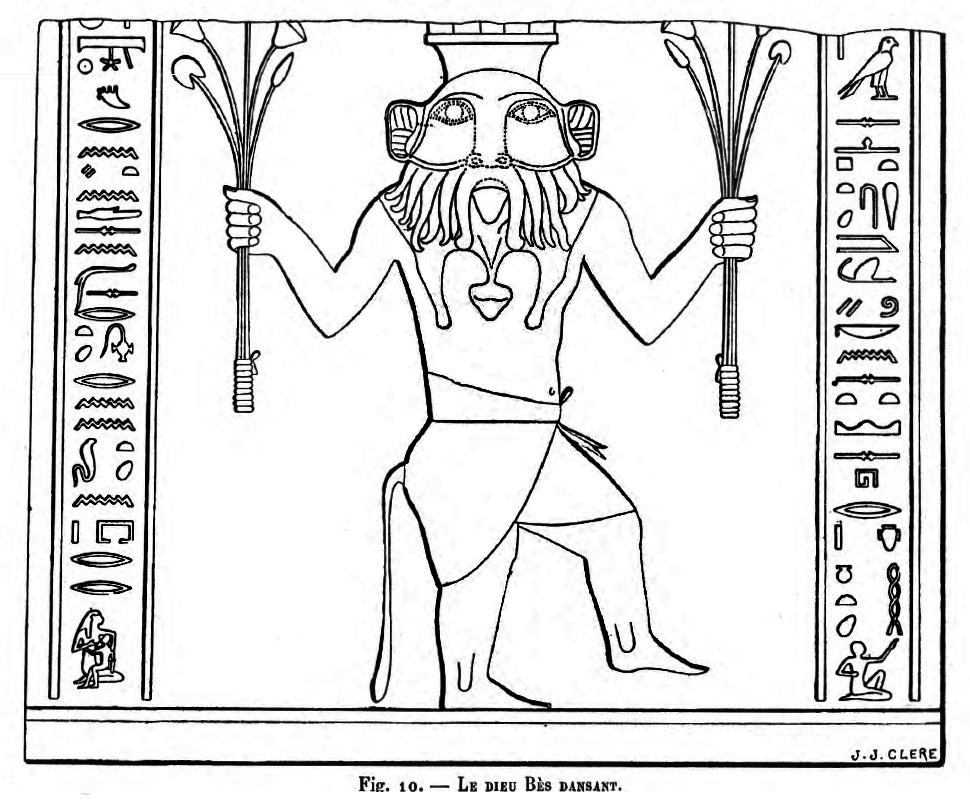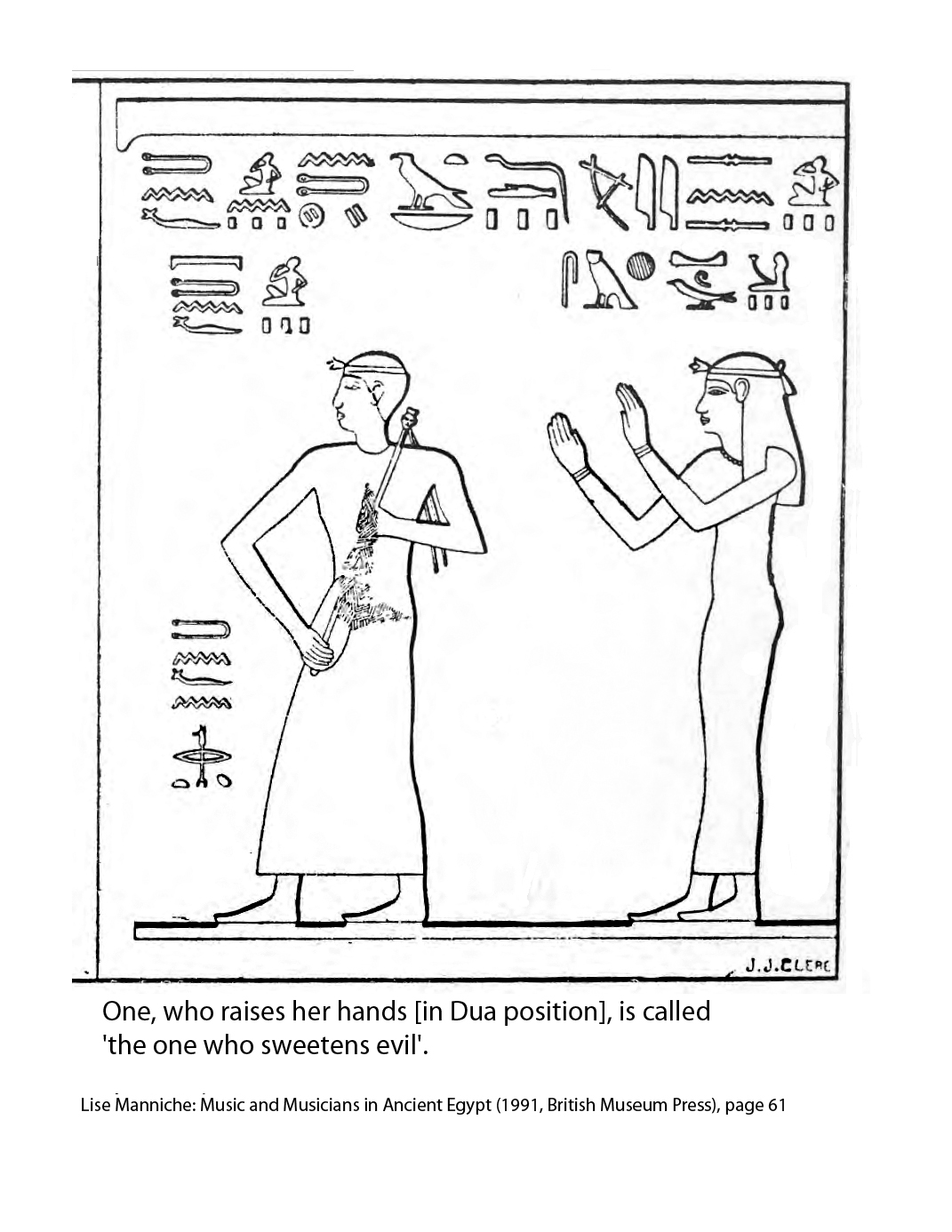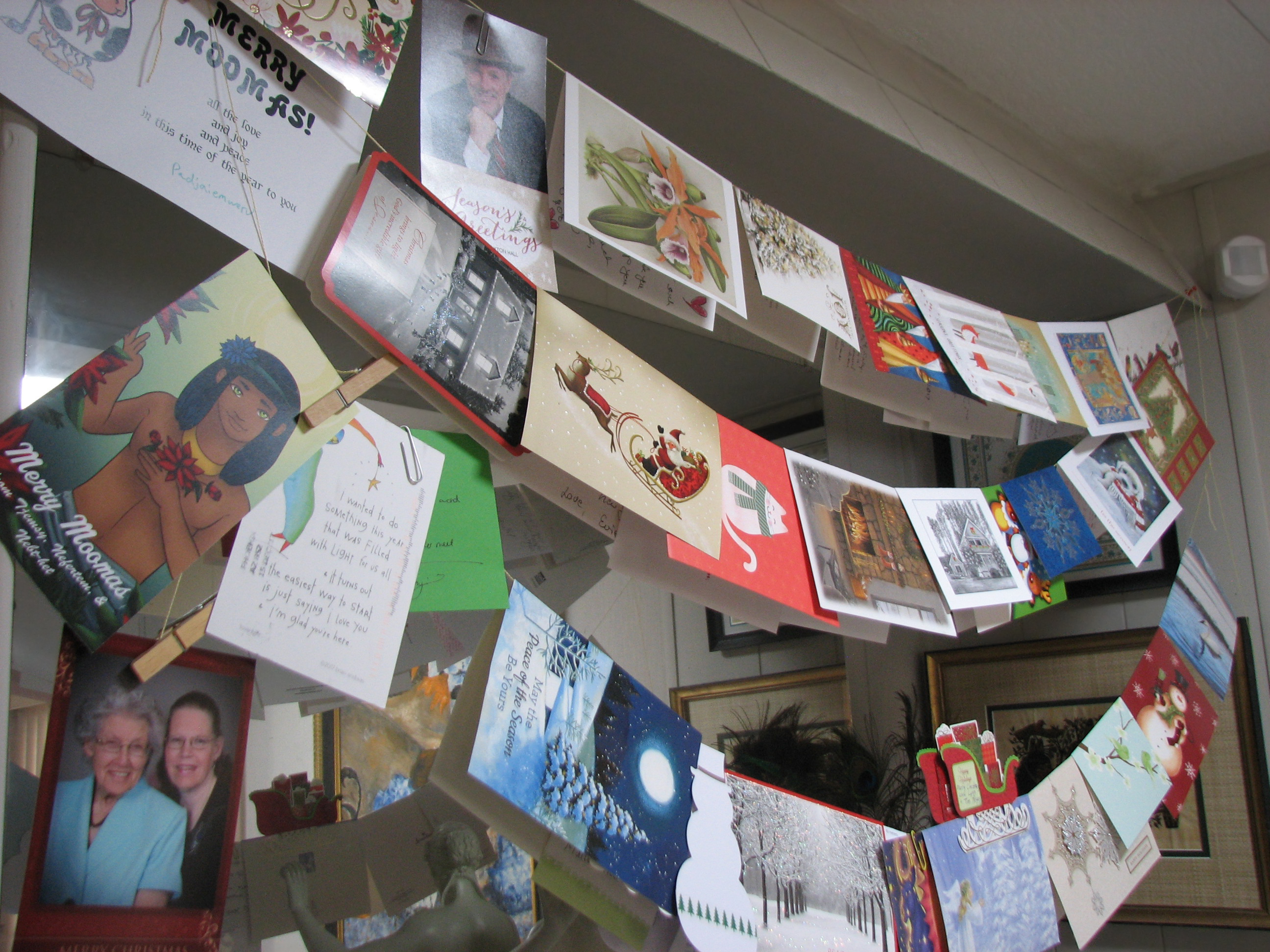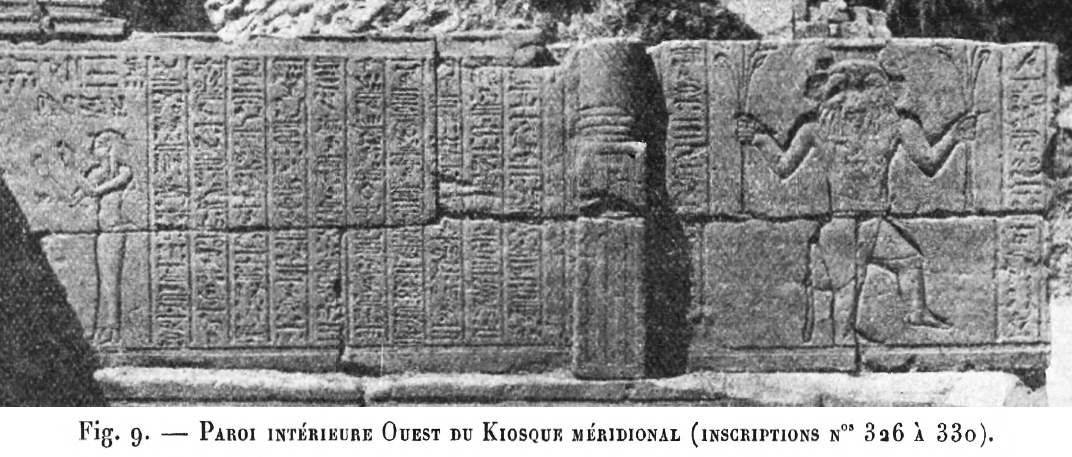|
December 17, 2017
How do you celebrate Festivals and Holidays the Kemetic way??
If we're going to celebrate Festivals and Holidays the Kemetic way, we're going to have a lively, exuberantly joyful time!
I give example of a Celebration at Medamud as an example.

"The accompanying scenes and annotations inside the gateway at Medamud are important for properly understanding the hymn to the Gold. To the right of the text of the hymn is a large depiction of a dancing Bes, a vertical inscription to the right of the deity states clearly that the goddess honored in the texts of the gateway is the far-wandering eye of the sun:"
Keneset is a land of the far southeast, up towards Punt and the land of the "eastern souls of the cosmographic text. The text to the left of the dancing Bes figure mentions night, and continues:
Drioton's photo shows the Bes to the right of the hymn and a scene with worshippers. We can see the lady in adoring “Dua” position at the far left in Drioton's photo in the far right in his drawing:
“The Medamud hymn to the returning goddess is an elaborated version of two lines in a hymn to Hathor at Dendara:
"The whole world rejoices to you,
Lisa Manniche describes the scene to the left of the hymn: "Preceding the whole group are two ladies adorned with flowers. One, who raises her hands [in “Dua” position], is called 'the one who sweetens evil'. a phrase which must surely proclaim the role of music in this particular scene. The caption for the drummer and harpist is unusually eloquent: 'The members of the choir take up their instruments and play them. The songstresses in full number adore the Golden Goddess and make music to the Golden Goddess: they never cease their chanting.' The lutenist and gesticulating lady are accorded the following lines: 'We dance for you, we dance for you, the words required by the adorers'."
 "One, who raises her hands [in “Dua” position], is called 'the one who sweetens evil'."
“Come, O Golden Goddess, the singers chant (The “iba” is a religious dance, associated with joyfulness.) Here is a segment of Coleman's translation, page 54:
“When the royal children pacify you with what is desired, His translation differs in some phrases. For instance for his "When the organizer praises you with his lotus blooms", Manniche has "the priest honors you with his basket". The basket might have been assumed to be full of lotus blooms, but apparently Drioton, from whom Manniche derives her version, thought the “basket” was a “sacred chest”. Meanwhile, it is clear this celebration is a lively, boisterous affair, full of rejoicing and dancing and joy!
The full Hymn to Hathor is located here: This research is in pdf-form, for saving and printing. Could modern-day celebrants equal such a thing? For one thing, as far as I know, we don't know what all the iba dance entailed, nor the ha dance. I suppose the Gods would appreciate our modern attempts, however, :) It's hard to imagine drunken celebrants waking those who then bless the Deity, too. I know the neighborhood drunken sports celebrants still at it at 1:00am do not create the same joy within anyone in earshot not a part of their gathering. If they were hooting and hollering for Hathor, would I at least smile? Meanwhile, courtesy to our neighbors is appreciated and part of Ma'at, to do what is fair. But within those constrains, we might let down our inhibitions a little and get out the sistrums and tambourines and sing and... Much joy to you, dear readers, during whatever you celebrate and however you celebrate!
 All the Kemetic "Moomas" and Christmas and Holiday cards we received December 2017 I think one other type of cards got into the mix, too! (Top center) |




